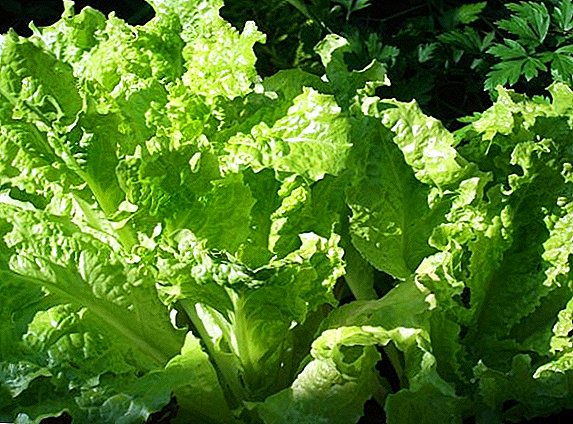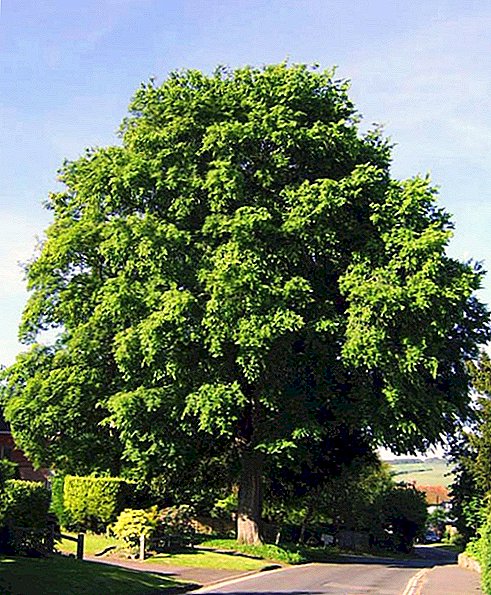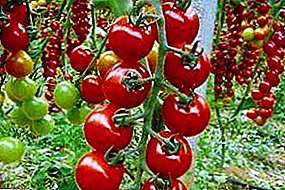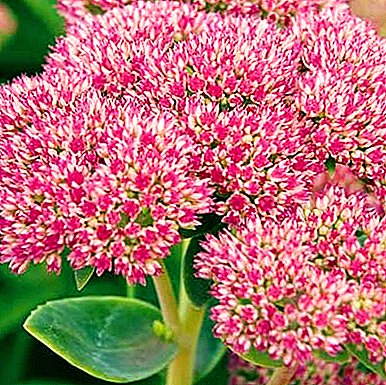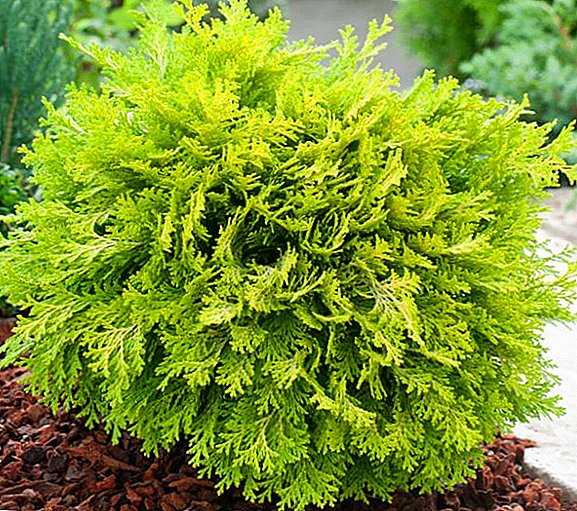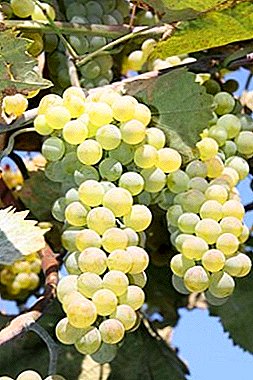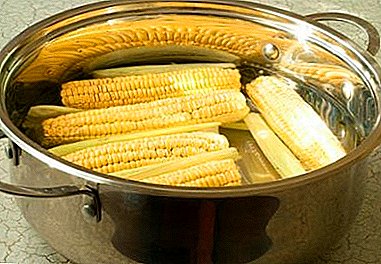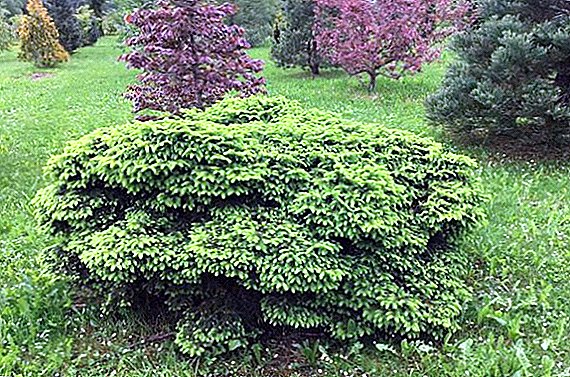 If you are looking for an unusual and beautiful shrub for your plot, you should definitely pay attention to the common spruce "Nidiformis". This unpretentious and incredibly beautiful plant will easily become a highlight in any landscape design. We offer to get acquainted with this dwarf tree and, perhaps, to join its many fans.
If you are looking for an unusual and beautiful shrub for your plot, you should definitely pay attention to the common spruce "Nidiformis". This unpretentious and incredibly beautiful plant will easily become a highlight in any landscape design. We offer to get acquainted with this dwarf tree and, perhaps, to join its many fans.
Description
Spruce "Nidiformis" - the result of the fruitful selection work of German scientists. It appeared in Germany in 1904. The dwarf herringbone has very compact dimensions: its height does not exceed 120 cm, and the diameter of the crown is 2.5 m.
The shape of this tree is cushion-shaped, but it is very fluffy and not at all prickly. The branches are fan-shaped on it. The length of the soft needles varies from 6-10 mm. A painted spruce can be in bright or dark green color.
Naturally, the spring color scheme is slightly different from the rest of the growing season, because at this time even evergreens are distinguished by their richness and richness of color, due to the emergence of new shoots. So in the spring "Nidiformis" acquires a light green tint due to young shoots. 
Important! Every year, this spruce bush adds only 5 cm in height and 7-8 cm in width.
4-5 years after planting, the dwarf spruce begins to bear fruit, its fruits are cones of 10-15 cm in length and 3-4 cm in diameter. At first they are painted in a light green color, and when mature they turn brown brown. This beauty belongs to long-lived plants and can decorate the garden for 250 years.
Growing up
The most important thing is that planting and growing spruce "Nidiformis" is quite simple, and even a beginning gardener can do it. Experts recommend planting dwarf spruce in spring or autumn, but it is allowed and winter planting.
There are many varieties of spruce. We advise you to get acquainted with the peculiarities of growing conik spruce, as well as Serbian, blue, barbed and common spruce.
 Young plants (2-3 years) are best transplanted along with the earthy clod, in which a certain microclimate has already formed.
Young plants (2-3 years) are best transplanted along with the earthy clod, in which a certain microclimate has already formed.
Planting spruce "Nidiformis":
- a planting pit is being prepared, it should be 1.5–2 times the diameter of an earthen coma, and its depth depends on the soil, thus, in areas with black soil and clay soils it should be 100 cm, and when planted on sandy and sandy ground - 80 cm;
- at the bottom of the pit it is necessary to lay out the drainage, not less than 20 cm;
- seedling should be poured abundantly and removed from the container, and then moved to the landing hole;
- then it is necessary to fix the bush smoothly and beautifully, it should be done in such a way that the trunk is located exactly and the most beautiful and fluffy side of the spruce is ahead;
- after this, the emptiness between the boundaries of the landing pit and the earthy clod is uniformly filled with the substrate;
- you should pay attention to the fact that the root neck should be at the same level with the soil and in no case below or above it;
- After that, the transplanted plant is watered abundantly, for this you need to use 10-15 liters of water.
Video: how to plant a coniferous plant
Important! Burlap or mesh, which is wrapped in an earthy ball, do not need to be removed. After 3-4 years, these materials will decompose in the ground and absolutely do not harm the plant.
Priming
Coniferous shrubs are best planted in a nutrient, moderately alkaline substrate. The priority is clay and sandy-humus soils. The soil should certainly be well drained, as this plant does not tolerate the stagnation of moisture.
Location
When planting spruce "Nidiformis" be sure to take into account that the shrub grows wide and after 3-4 years its diameter will be about 3 m, therefore, in the area where it will grow, there should be enough space.
Young plants do not tolerate open sunlight, burns on the needles can cause burns, so trees should be shaded. With age, this feature disappears, and the presence of a sufficient amount of light only enhances the decorativeness of the shrub.  Protection from the wind plant is not required, so it can be planted in open areas.
Protection from the wind plant is not required, so it can be planted in open areas.
Did you know? Despite the fact that all spruce trees belong to evergreen plants, they tend to fold needles, in the fall they lose about 1/7 of the needles.
Watering
In the matter of moisture, this plant is considered quite capricious, it does not tolerate both its excess and deficiency. Particular attention should be paid to watering young "Nidiformis", they are recommended to water every 7 days. In very hot and dry weather, the procedure should be carried out 2 times a week. Adult plants in the sultry summer water every 10-14 days.
We recommend reading about how to choose a spruce for the suburban area, as well as how to protect the spruce from diseases.
Top dressing
When planting, 100-150 g of nitroammofosca must be introduced into the ground. Then spruce is fed 1-2 times per season with special fertilizers for conifers. Under no circumstances can manure, urea and humus be used, such top dressing can ruin the spruce "Nidiformis". 
Pruning
Dwarf spruce needs regular sanitary pruning, that is, in late May - early June, when sap flow is not so active, it is necessary to remove dried and damaged branches.
Did you know? Spruce needles contain a lot of vitamins. Medicines of a different spectrum of action are made from it, and the most popular way of using such raw materials is the fight against vitamin deficiency.For decorative purposes, you can cut the bush as required by the design idea, most often this procedure is mandatory for the formation of hedges.

Care
It is not difficult to care for a dwarf spruce; in order to do this qualitatively, it is necessary to follow a few simple rules, namely:
- Regularly weed the ground around the bush from grass and weeds.
- Periodically loosen the soil near the plant.
- Cut or lift branches that are in contact with the ground.
- Remove damaged and dry twigs in a timely manner to ensure good air circulation.
- It is necessary to pinch the young shoots in the period of active growth in order to spruce look aesthetically pleasing.
- Youngsters for the winter should be covered with spruce leaves, and for plants older than 3 years frost is not terrible.
- In snowy winters, it is better to build a protective frame in order to avoid breaking ate under the pressure of snow.
- Dwarf spruce is fertilized 1-2 times a year exclusively with top dressing intended for coniferous plants.
Diseases and pests
Very often, the dwarf spruce "Nidiformis" affects the spider mite, the spruce bark beetle moths and the spruce and leafy hermes, fungicides and insecticides are used to combat them.  One of the common ailments of this plant is Schutte's disease. Fungal disease most often affects young spruce. Symptomatology is manifested by a change of color and loss of needles. Treat Christmas trees with products that contain sulfur or copper, for example, Bordeaux liquid.
One of the common ailments of this plant is Schutte's disease. Fungal disease most often affects young spruce. Symptomatology is manifested by a change of color and loss of needles. Treat Christmas trees with products that contain sulfur or copper, for example, Bordeaux liquid.
This fungicide can also be used for prophylactic purposes, for this it is necessary to spray the needles in the spring and autumn with a weak solution of the drug. In order for the dwarf spruce tree not to hurt, it is very important to carry out sanitary pruning of the plant in a timely manner and to ensure that the soil does not accumulate excess moisture, which is detrimental to this shrub.
Breeding method
Norway spruce "Nidiformis" propagated by grafting. Carry out the procedure in late April - early May. Certainly on an overcast day, cuttings are separated from the shrub - healthy branches from the middle, 6-10 cm each.
We advise you to read about how to choose a pruner for the garden.
This can be done with a sharp knife or pruner. It should be noted that spruce trees are suitable for dividing at the age of 5-10 years. Before planting, the cuttings must be cleaned with a knife, this should be done in such a way that the bark is not damaged, and the excess needles and irregularities need to be cut.  After that, it is recommended to soak them for a day in the solution "Kornevina". Then, in the previously prepared wells 5–6 cm deep, cuttings should be placed at an angle of 30 degrees. After 1.5-4.5 months, they will appear roots.
After that, it is recommended to soak them for a day in the solution "Kornevina". Then, in the previously prepared wells 5–6 cm deep, cuttings should be placed at an angle of 30 degrees. After 1.5-4.5 months, they will appear roots.
Evergreen conifers are one of the most popular in the design of the suburban area. Familiarize yourself with the nuances of growing thuja, juniper, cypress, fir, boxwood, larch, pine, cedar and myriac foxtail.
Application
The range of application of dwarf spruce "Nidiformis" is incredibly wide. She is beautiful in single and group landings. It is often used to create hedges. At the same time, it is possible to plant Christmas trees both in open ground and in containers, which is very convenient for small areas.
Dwarf spruce combines perfectly with other conifers. It can be used to create a variety of compositions, it is ideal for rock gardens and decorating rocky hills. 
Did you know? There are 40 species of spruce, and only 4 of them are hybrids.Now you know that the decorative and unpretentiousness of this coniferous tree opens up many opportunities for the gardener to implement the most creative and unusual ideas for decorating the site.


